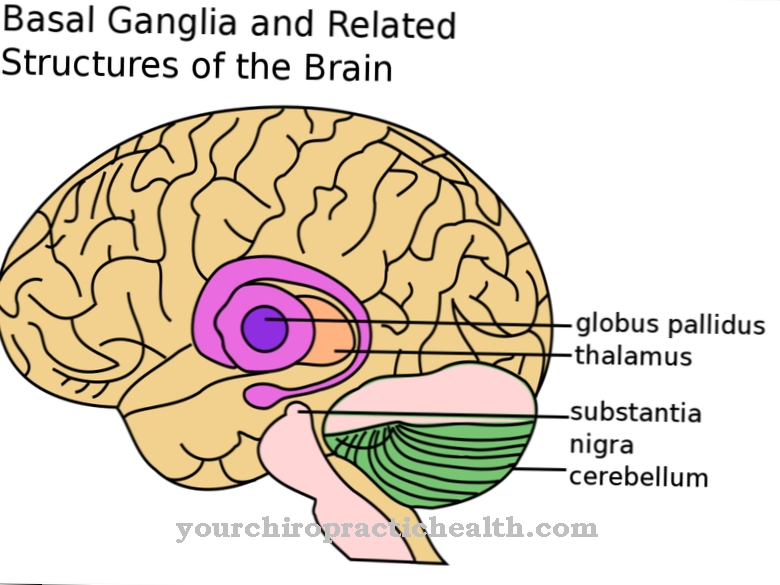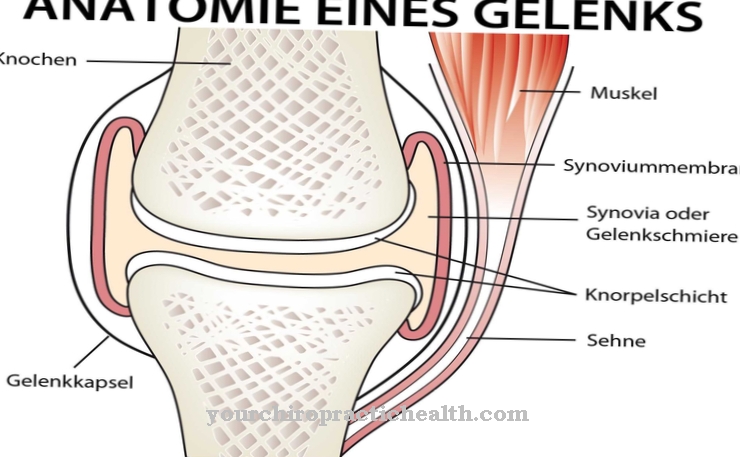At the Mandibular nerve it is the third terminal branch of the 5th cranial nerve. This nerve is also called Trigeminal nerve denotes and consists of certain visceromotor and somatosensitive fibers. Since the mandibular nerve is closely connected to the nerves of the brain, it is of great importance for the proper functioning of the human organism.
What is the mandibular nerve?
In some cases, the mandibular nerve is also known as the mandibular nerve. This term has its origin in the Latin word mandible, which means something like lower jaw. The mandibular nerve is closely connected to the fifth cranial nerve. This cranial nerve is divided into three main branches, with the mandibular nerve being the third branch.
The fifth cranial nerve has the medical name trigeminal nerve and is often referred to simply by its abbreviation V3. This nerve is primarily responsible for supplying the lower area of the face and the tongue. The nerve is connected to the motor fibers of the corresponding areas. For this reason, he is responsible, among other things, for the control of the muscles that are jointly responsible for movements of the floor of the mouth and the chewing apparatus.
In addition, the nerve is also connected to the so-called tensioners, which are located inside the eardrum. The medical name for these ear muscles is tensor tympani muscle. The nerve also runs through the soft palate or the so-called tensor veli palatini muscle. From a developmental point of view, the mandibular nerve is the first nerve of the gill arch. The mandibular nerve first passes the trigeminal ganglion and then emerges from the cranial cavity. The nerve passes through the so-called foramen ovale, whereupon it enters the infratemporal fossa. In this area, the terminal branches of the nerve split.
Anatomy & structure
The mandibular nerve is made up of numerous different branches that run through different areas of the body. In particular, the sensory and motor branches of the mandibular nerve are subdivided. Sensitive branches include the meningeal branch, the auriculotemporal nerve, the inferior alveolar nerve, the lingual nerve and finally the buccal nerve. The ramus meningeus as part of the mandibular nerve leaves the so-called infratemporal fossa as the spinosus nerve in order to then reenter the cranial cavity.
The auriculotemporal nerve picks up special postganglionic fibers from the so-called otic ganglion. Ganglions are generally bundles of nerve cell bodies. In this case, nerves run through the parotid gland. The fibers of the auriculotemporal nerve then merge into the parotid gland. This nerve is primarily responsible for supplying the sensitive skin in the area of the temples and the auricles.
The alveolar nerve primarily innervates the teeth and the gums, which are located on the lower jaw. In addition, one of its terminal branches supplies this nerve to the skin above the chin. The lingual nerve takes up taste fibers and supplies large parts of the front tongue and soft areas of the palate. The buccal nerve runs through the so-called buccinator muscle and is responsible for the sensitive supply of the mucous membranes on the cheeks and gums.
The motor branches of the mandibular nerve include the mylohyoid nerve, the masseteric nerve, the deep temporal nerve and the pterygoid nerve. In addition, the mandibular nerve has other branches that, among other things, tension the soft palate and reduce sound conduction.
Function & tasks
The mandibular nerve takes on numerous different functions and tasks in the human organism. These primarily relate to the sensitive innervation of areas of the head. In addition to sensitive branches of the mandibular nerve, the motor branches ensure the correct control of certain muscles and muscle groups. The mandibular nerve is therefore primarily important for the innervation and motor functions of the face, jaw and mouth area.
The nerve participates in the control of movement processes and sensitizes numerous areas so that they are able to perceive pain, temperature and similar stimuli. The mandibular nerve and its correct functioning, for example in the chewing apparatus and the movements associated with eating, are particularly important. Here the mandibular nerve takes on essential tasks with regard to the transmission of stimuli and the control of the corresponding muscle groups in the area of the jaw.
You can find your medication here
➔ Medicines against memory disorders and forgetfulnessDiseases
In the event that the mandibular nerve suffers damage of various causes and characteristics, numerous complaints and diseases are possible. The mandibular nerve, for example, is responsible for a multitude of important movement sequences that are carried out by the muscles of the face, head and jaw.
For example, if certain branches of the masticatory muscles fail, the lower jaw moves sideways when the mouth is opened. This is due to the muscles of the floor of the mouth, which the mandibular nerve innervates. The corresponding muscles are responsible for the medial movements of the jaw. If you experience abnormal sensations or discomfort in the mandibular nerve, you should consult a doctor immediately.

























.jpg)

.jpg)
